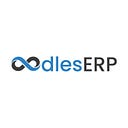ReactJS and ERP: A Combination for Modernizing Enterprise Applications
ERP structures have emerged as essential for organisations looking to simplify their operations, correctly manage resources, and take benefit of an aggressive approach. However, traditional ERP solutions frequently struggle to keep up with the demands of modern human stories and rapidly changing business requirements. Enter ReactJS, a powerful JavaScript library that has transformed how we build consumer interfaces.
What is ReactJS?
ReactJS, created and maintained by Facebook (now Meta), is a component-based toolkit that allows developers to design reusable UI components and build extremely interactive and responsive web apps. Its virtual DOM (Document Object Model) and efficient diffing set of rules assure seamless rendering and top-tier performance, even for complex applications.
Also, Read ReactJS Components and Data Communication
Why ReactJS for ERP?
Modular Architecture
ReactJS provides a modular approach to application development that perfectly correlates with the modular architecture of ERP structures. Each component of an ERP device, like as finance, inventory management, or human resources, can be designed as a standalone React element, making it easier to maintain and update character modules without affecting the entire device.
Seamless User Experience
ERP frameworks usually have outdated and clumsy user interfaces, which causes employee irritation and decreased productivity. ReactJS enables developers to construct modern, intuitive, and responsive user interfaces that enhance the entire user experience, resulting in increased adoption and satisfaction throughout the organisation.
Improved Performance
ReactJS’s virtual DOM and green diffing technique ensure that only the most important components are re-rendered when statistics change, resulting in improved overall performance and faster load times, especially for data-intensive ERP systems.
Code Reusability
ReactJS encourages the creation of reusable additives that can be shared across several modules or even different ERP structures. This not only speeds up development, but also maintains uniformity in the user interface and behaviour throughout the utility.
Ecosystem and Community Support
ReactJS has an enormous and thriving environment of libraries, gear, and a supportive network, making it simpler to locate answers to common problems.
Also, Read React.js: A Powerful Framework For Modern Web Development
Integrating ReactJS with ERP Systems
While ReactJS is often a front-end library, it may be smoothly connected with a variety of returned-giveup technology and ERP systems. One well-known strategy is to use ReactJS to create the user interface layer while leveraging existing ERP systems or custom-built APIs for records management and commercial enterprise good judgement.
For example, you can utilise ReactJS to construct an elegant and responsive interface for inventory management while communicating with the existing ERP system’s stock management module via APIs. This strategy allows you to modernise the user experience without having to rebuild the entire ERP system, minimising the risk and cost associated with a full replacement.
Conclusion
The integration of ReactJS and ERP systems provides a viable solution for modernising agency packages and improving customer experiences. Organisations may create notably interactive and responsive ERP systems that fit the needs of today’s fast-paced business environment by leveraging ReactJS’ issue-based architecture, modular approach, and efficient rendering. Whether you’re developing a new ERP system from the ground up or updating an existing one, ReactJS gives you the tools and flexibility you need to create robust and scalable solutions that drive productivity and efficiency throughout your organisation.
